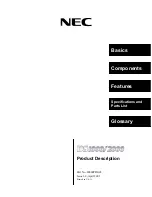
NovaLynx Corporation________________________________________________________________________________
200-WS-02E
Page 10
December 2018
3.
Using an ohmmeter to monitor the potentiometer output, turn the potentiometer shaft until
the center of the gap is located. You may wish to make a mark on the shaft aligned to the North
label.
4.
Aim the counterweight in the same direction as the North label and carefully lower the hub
onto the potentiometer shaft. Tighten the set screw.
5.
Check your work by observing the meter as you swing the vane across North.
The potentiometer test will indicate whether the sensor is working correctly. If there is no signal or the
signal is not changing then either there is a problem in the cable or inside the sensor. Minor problems
with the cable can be repaired, but if the potentiometer is bad the whole assembly must be replaced.
The
repair kit (Part number 200-WS-02E-ASSY) includes the cable as well as the potentiometer.
11
ADDITIONAL PRECAUTIONS
11.1
Lightning Protection
The shield wire in the sensor cable is electrically connected to the metal hub / vane assembly. The
purpose is to bleed off static that would otherwise affect the sensor output. Therefore it is important
to earth ground the shield wire for best results.
Installations where nearby lightning strikes are likely should include a properly grounded lightning rod
above the level of the sensor, preferably on a separate tower.
11.2
Bird Perch
Birds of all sizes find the shaft of the wind vane a desirable place to land. The weight of a large bird can
easily damage the potentiometer by breaking it loose from the body of the sensor. The best way to
reduce this hazard is to provide an alternate landing site nearby that would be more attractive to the
weary bird.
11.3
Falling Parts Hazard
Always be careful when working on equipment that is mounted above you. Do not allow others to
stand below when equipment is being installed as falling objects can be hazardous. Be extra careful if
your sensor has been damaged, particularly if the vane assembly is not in the correct position.
11.4
Handling
The cup assembly is fragile, and it is easy to break a cup from its stem unless one is careful. Unpack the
unit carefully, and avoid laying the sensor on its side which would place strain on the cup assembly.




























